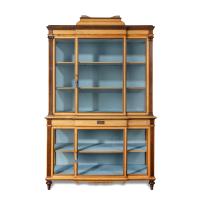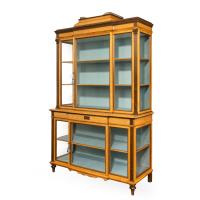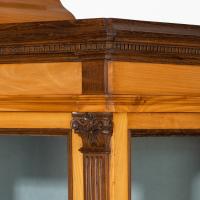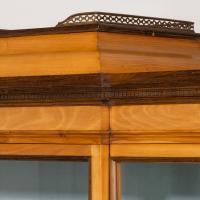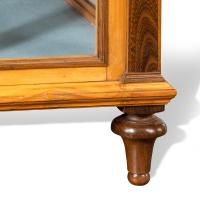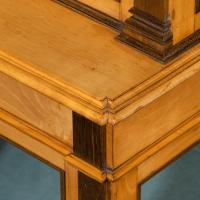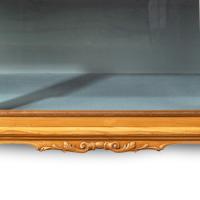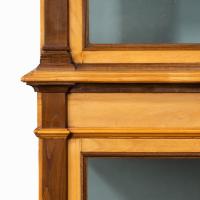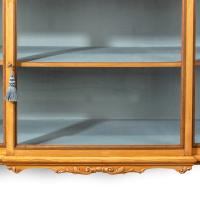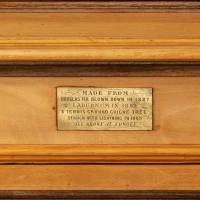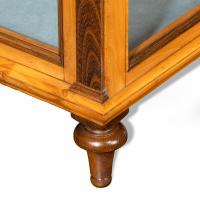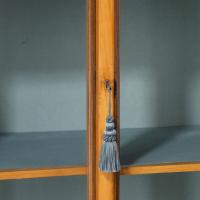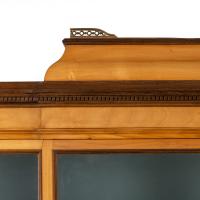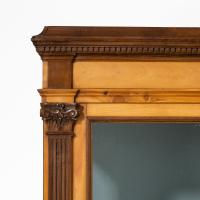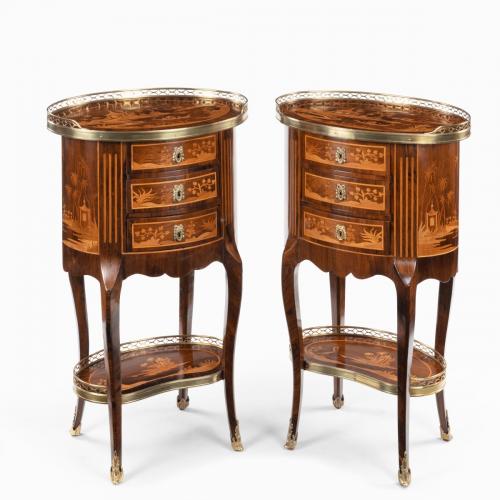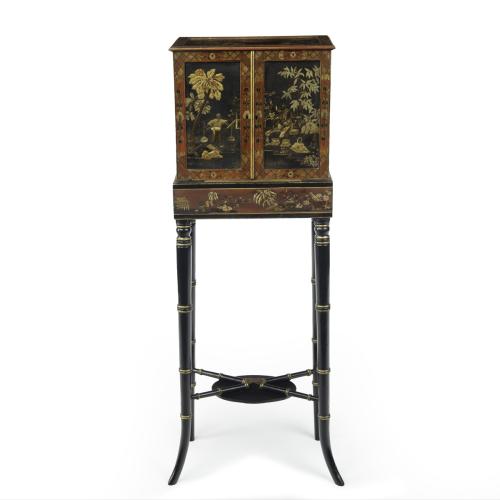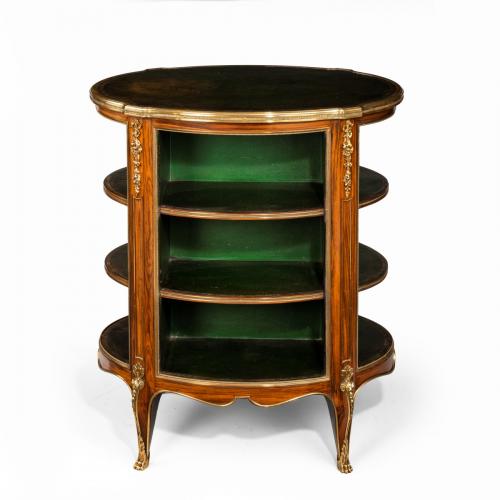
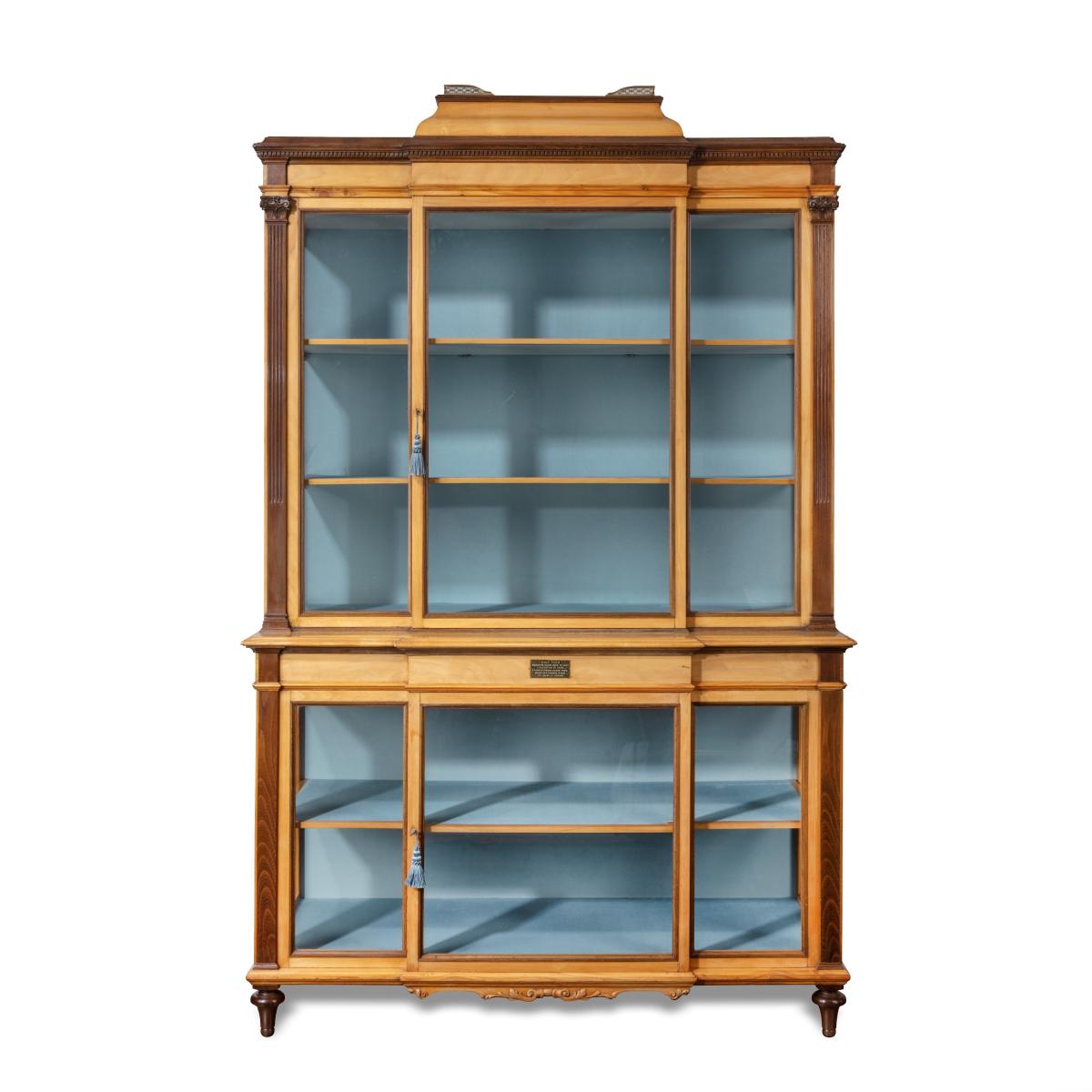
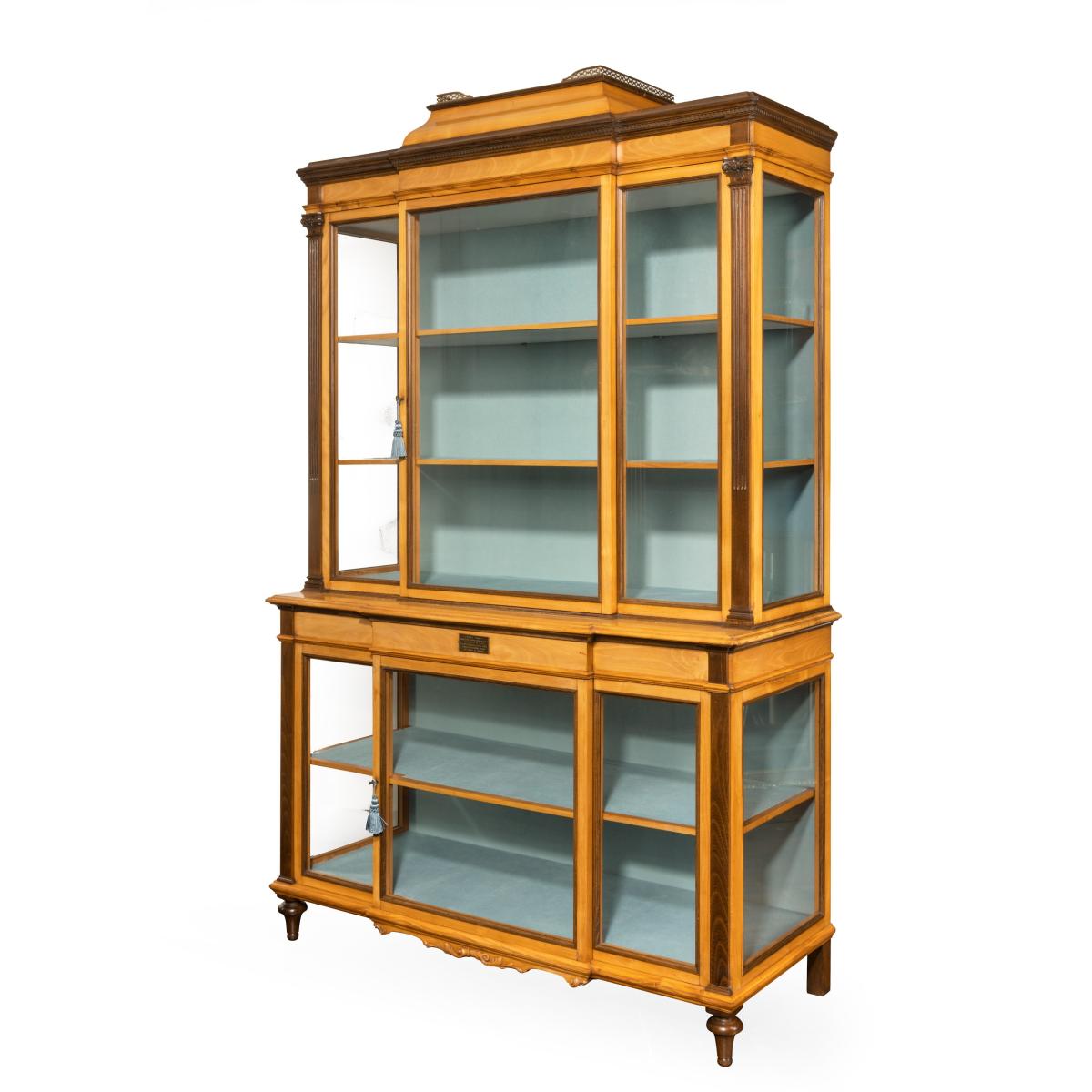
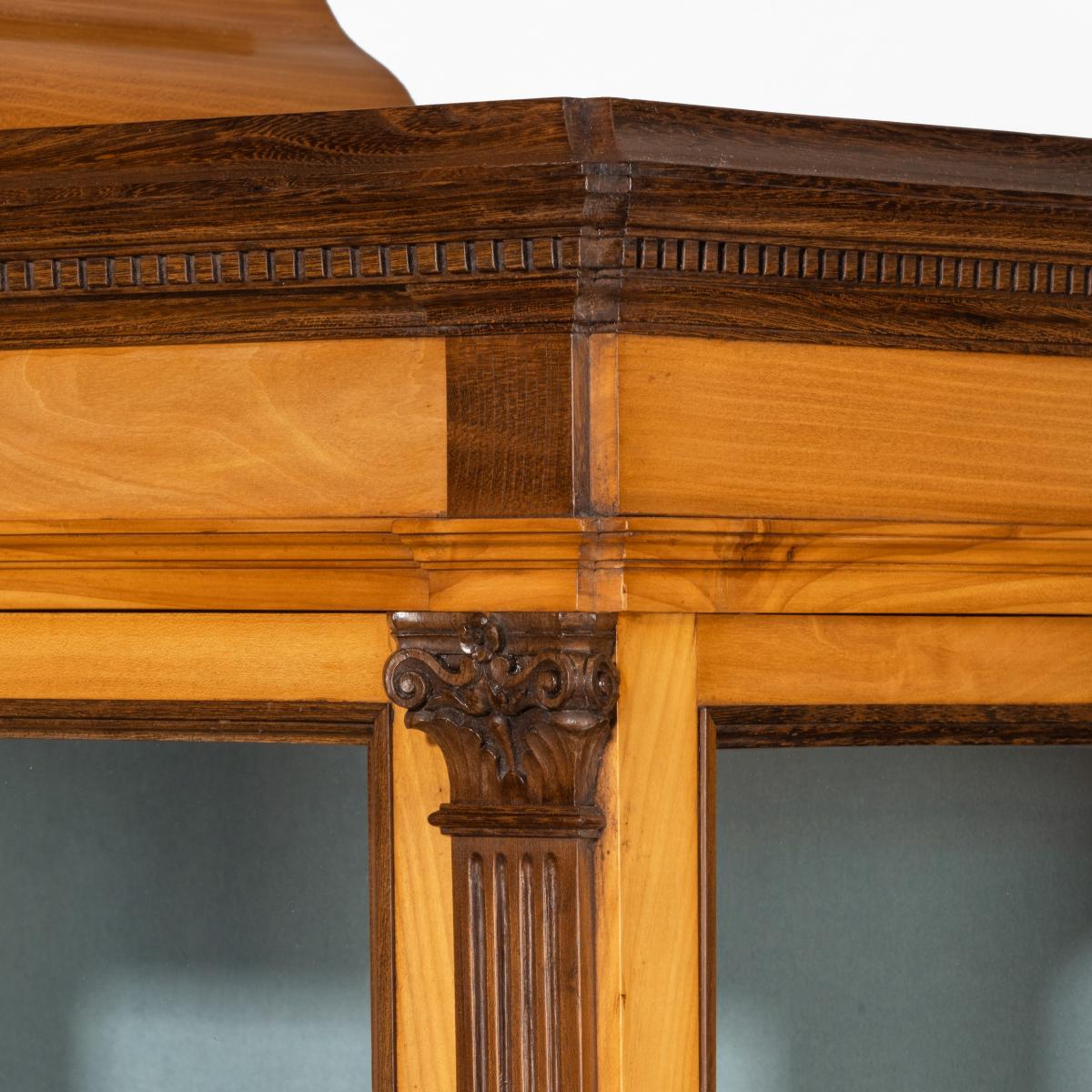
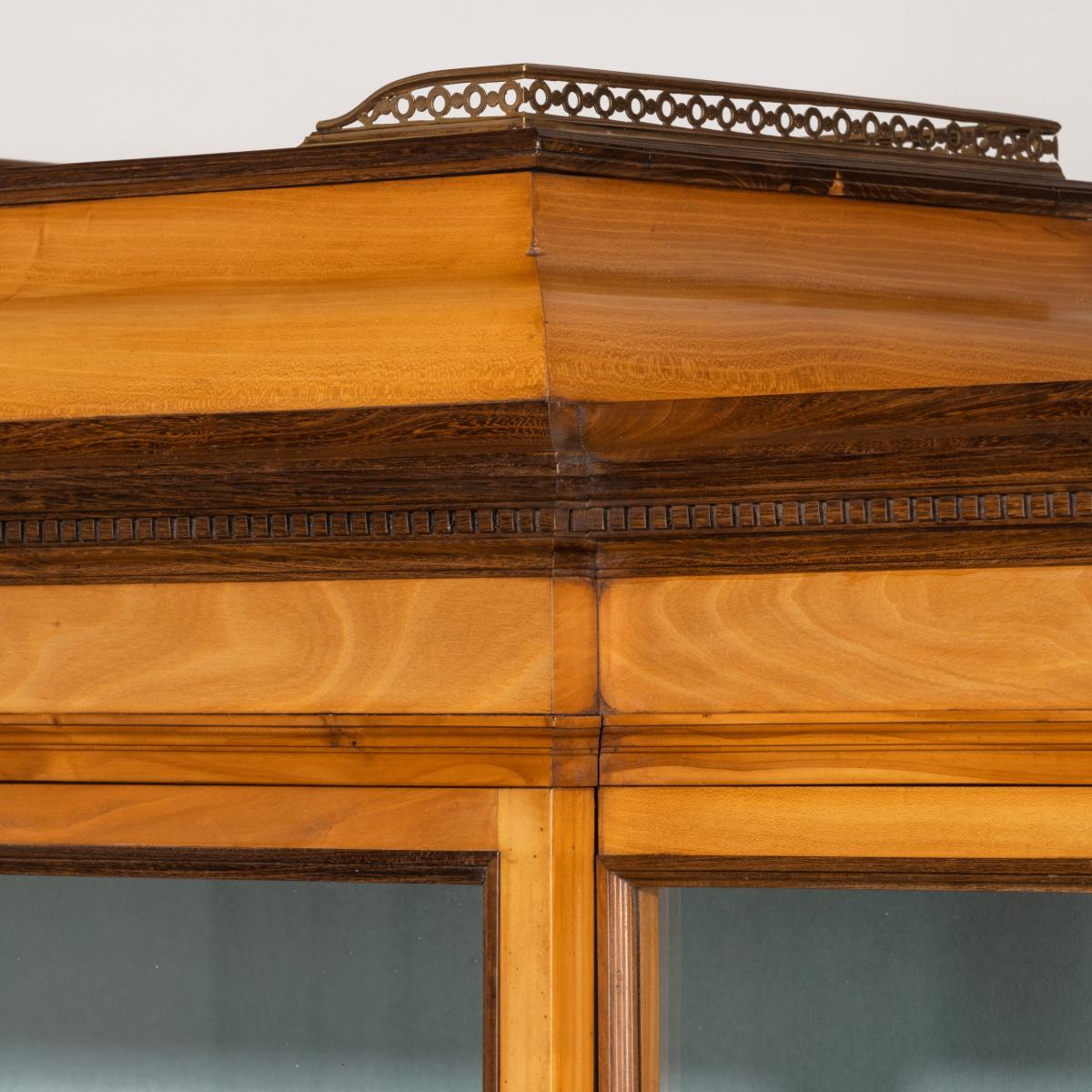
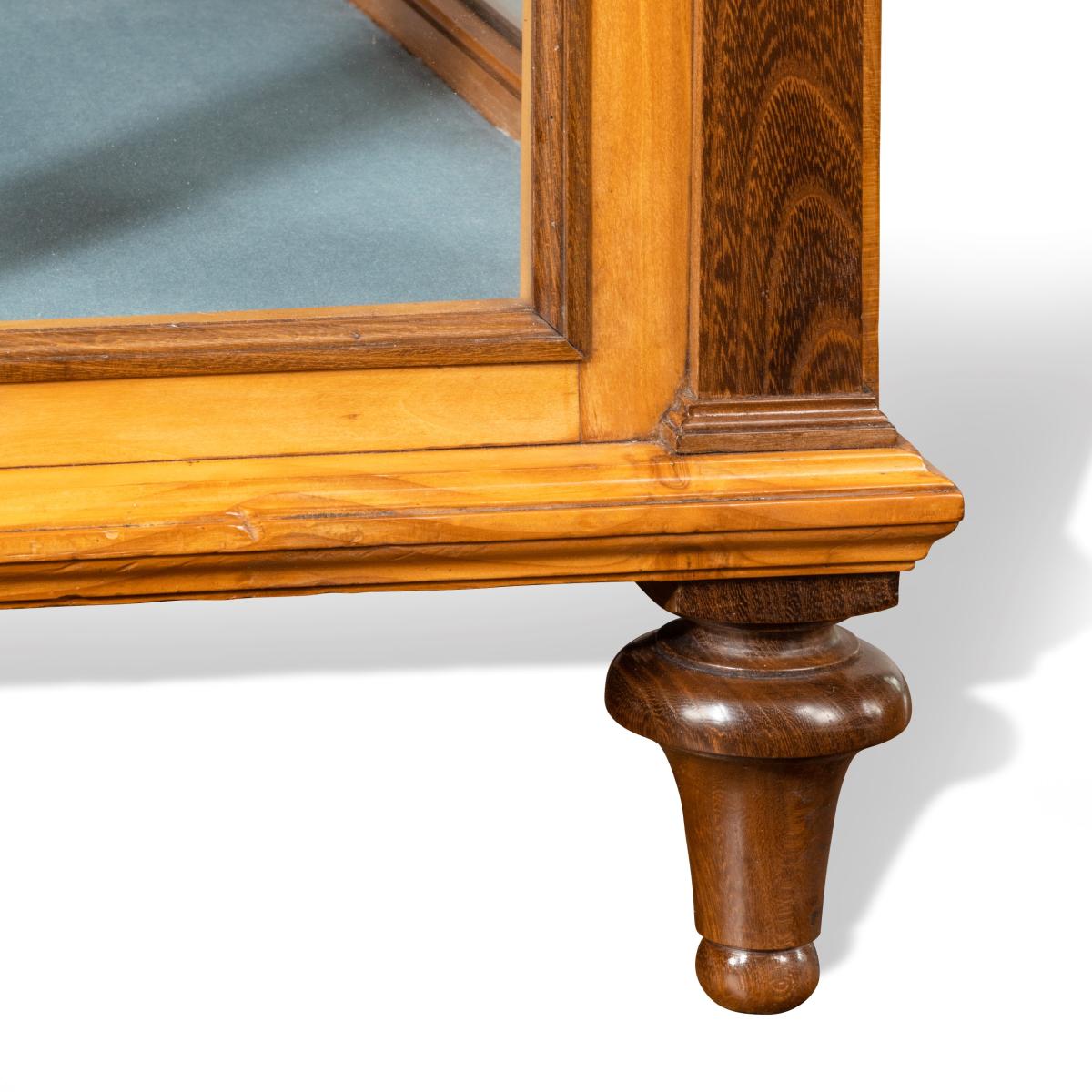
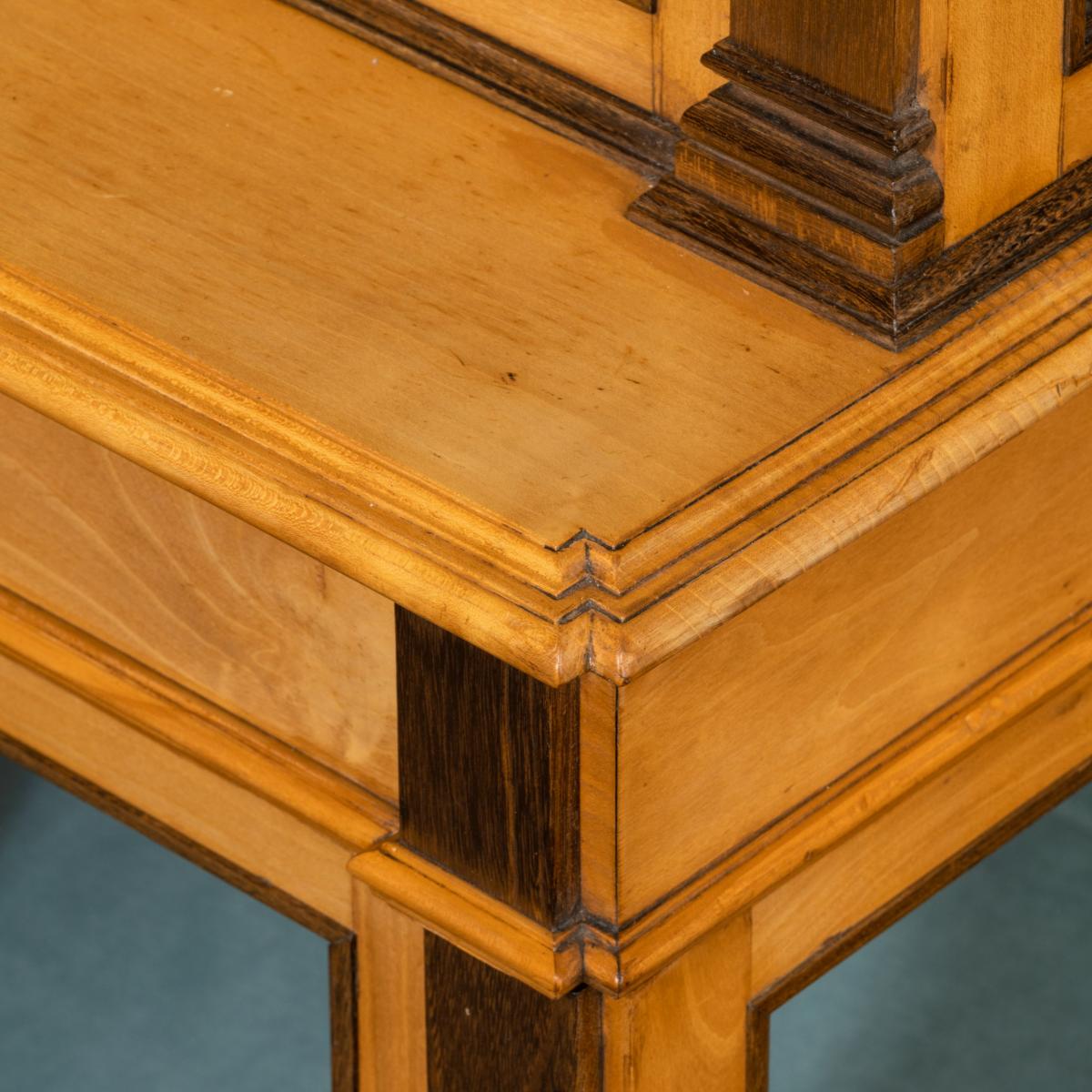
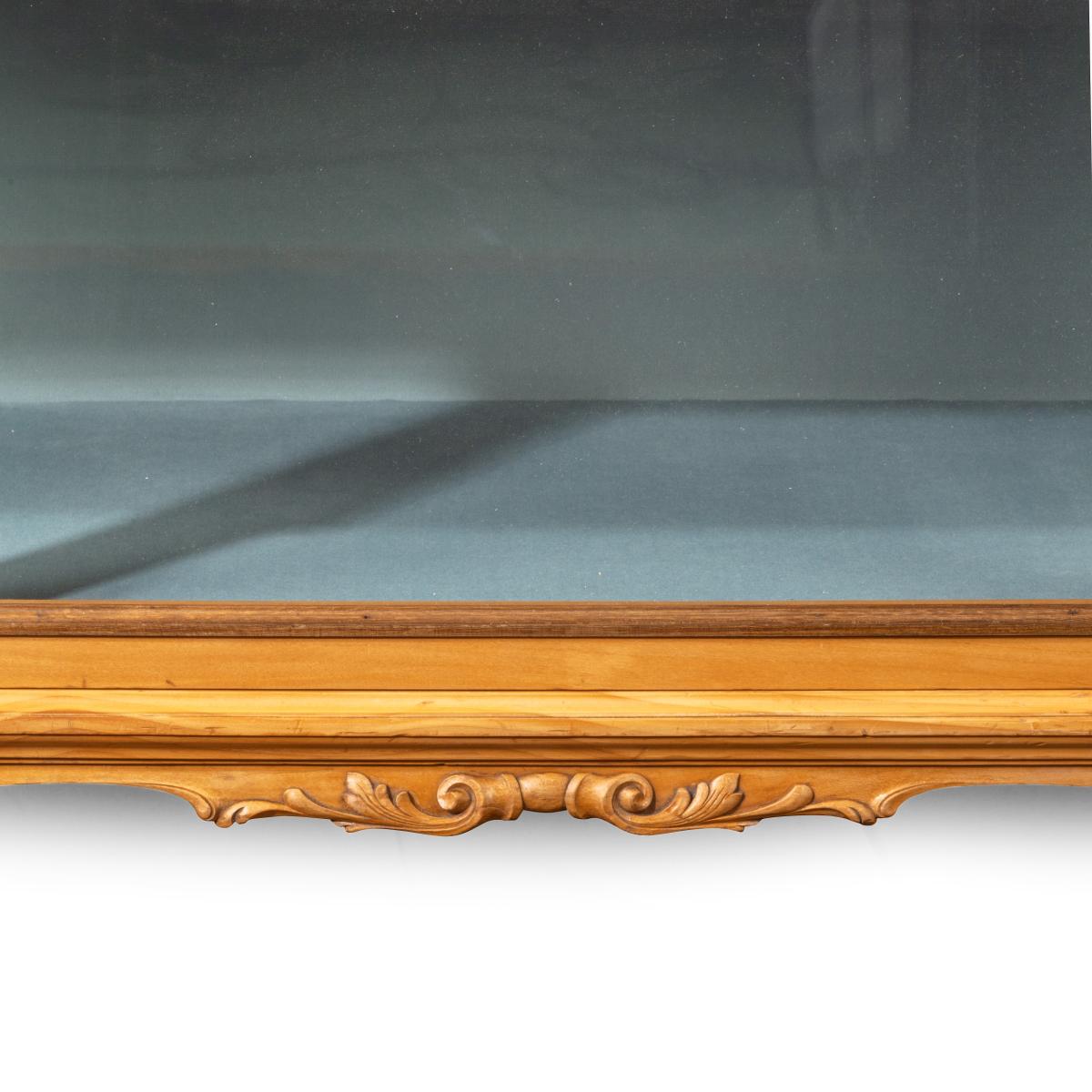
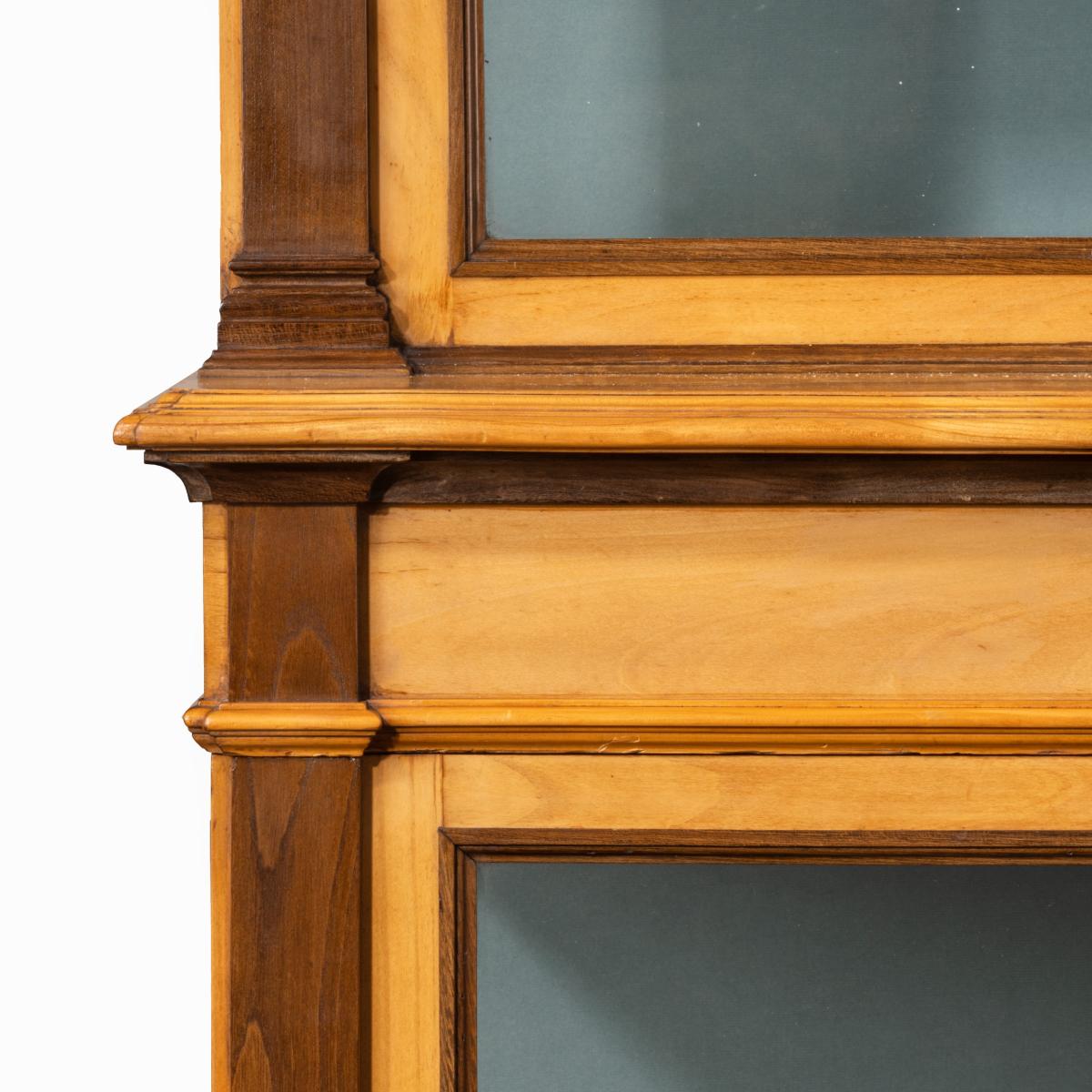
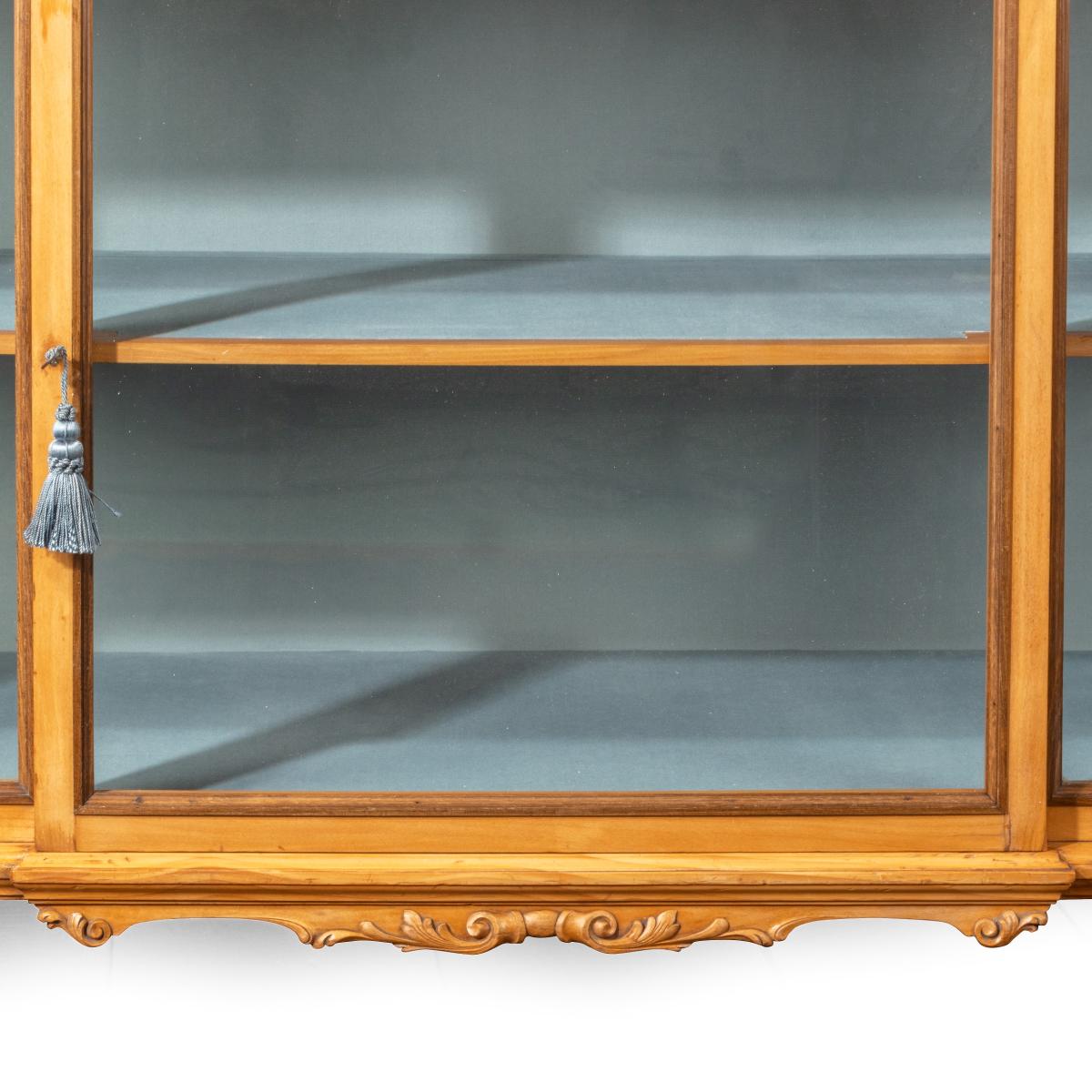
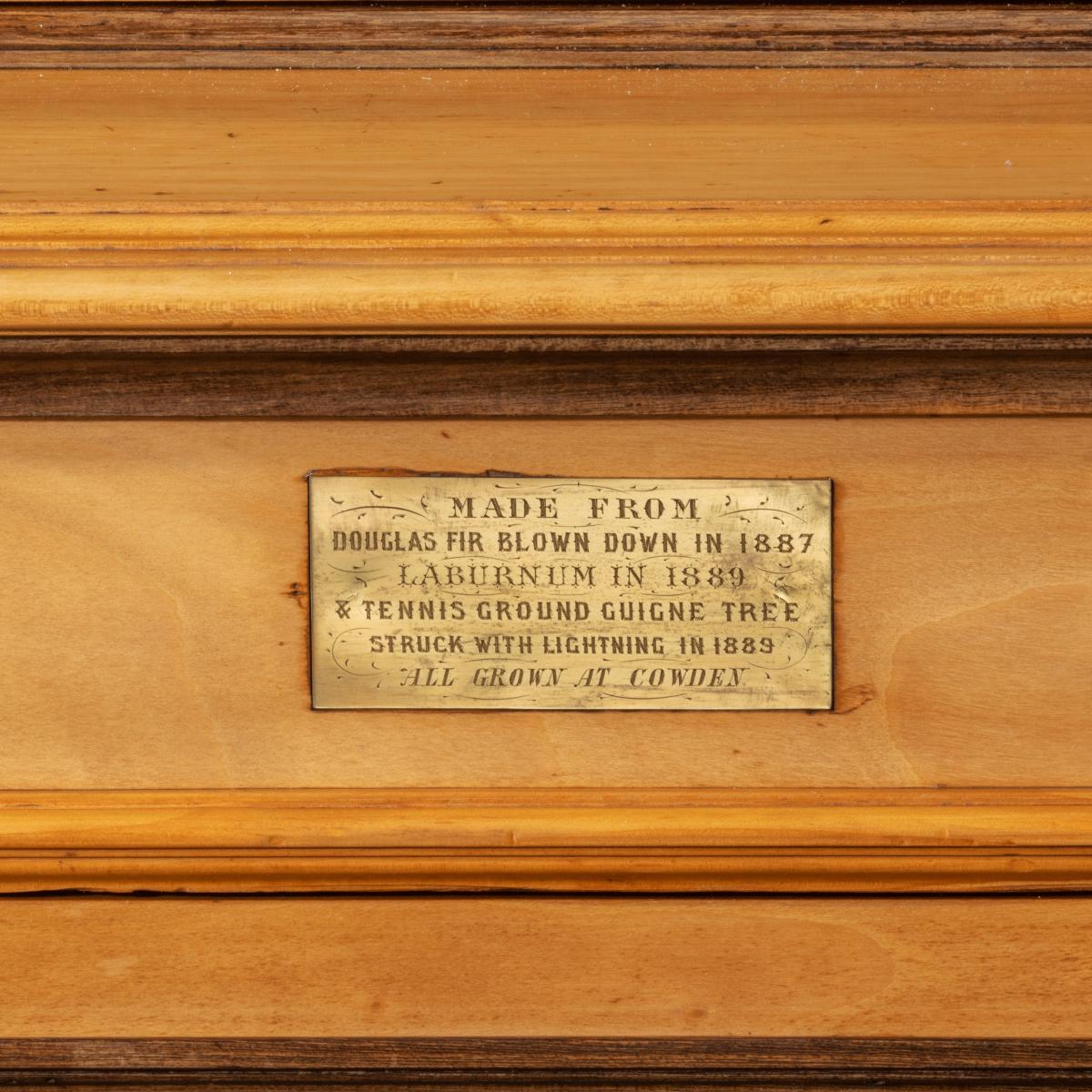
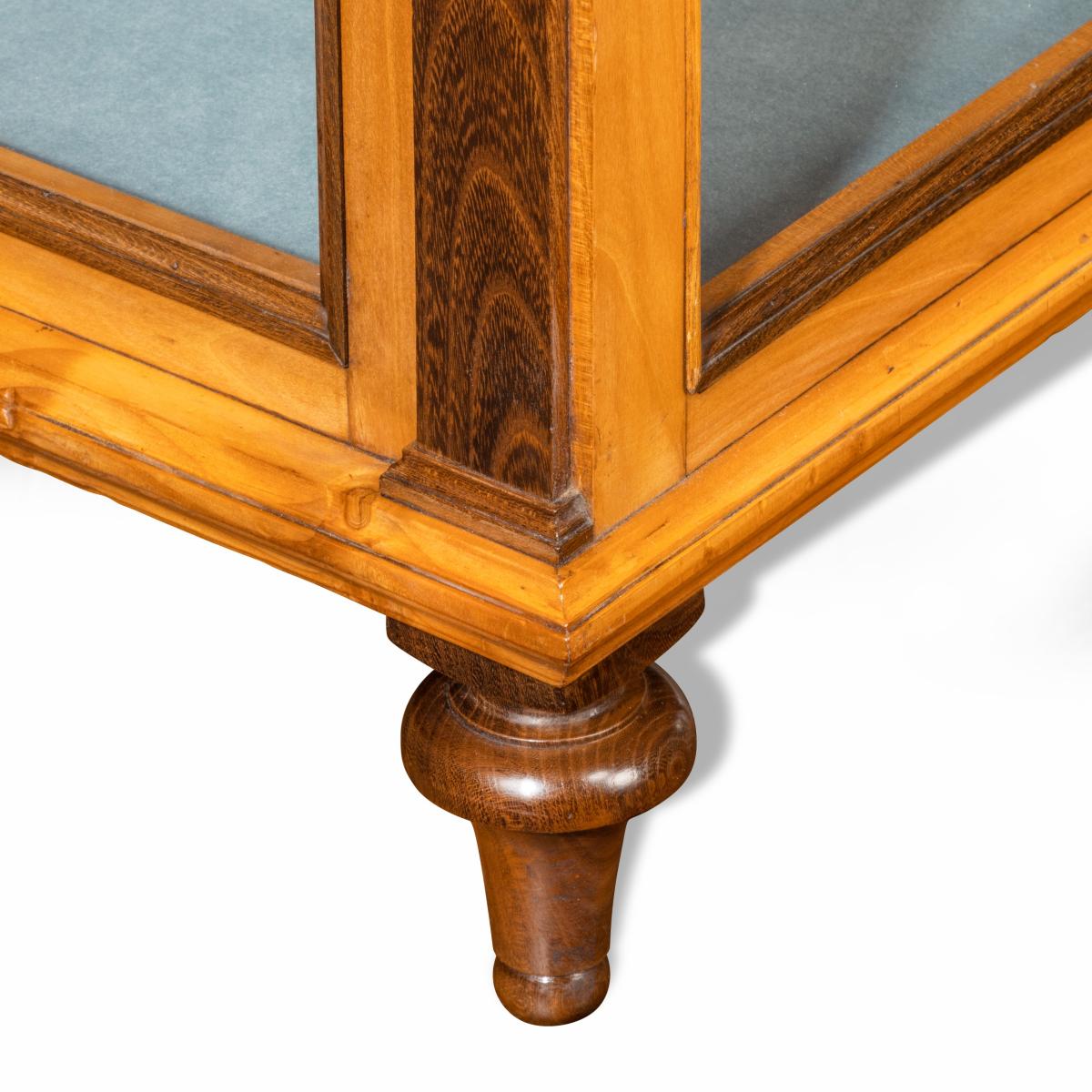
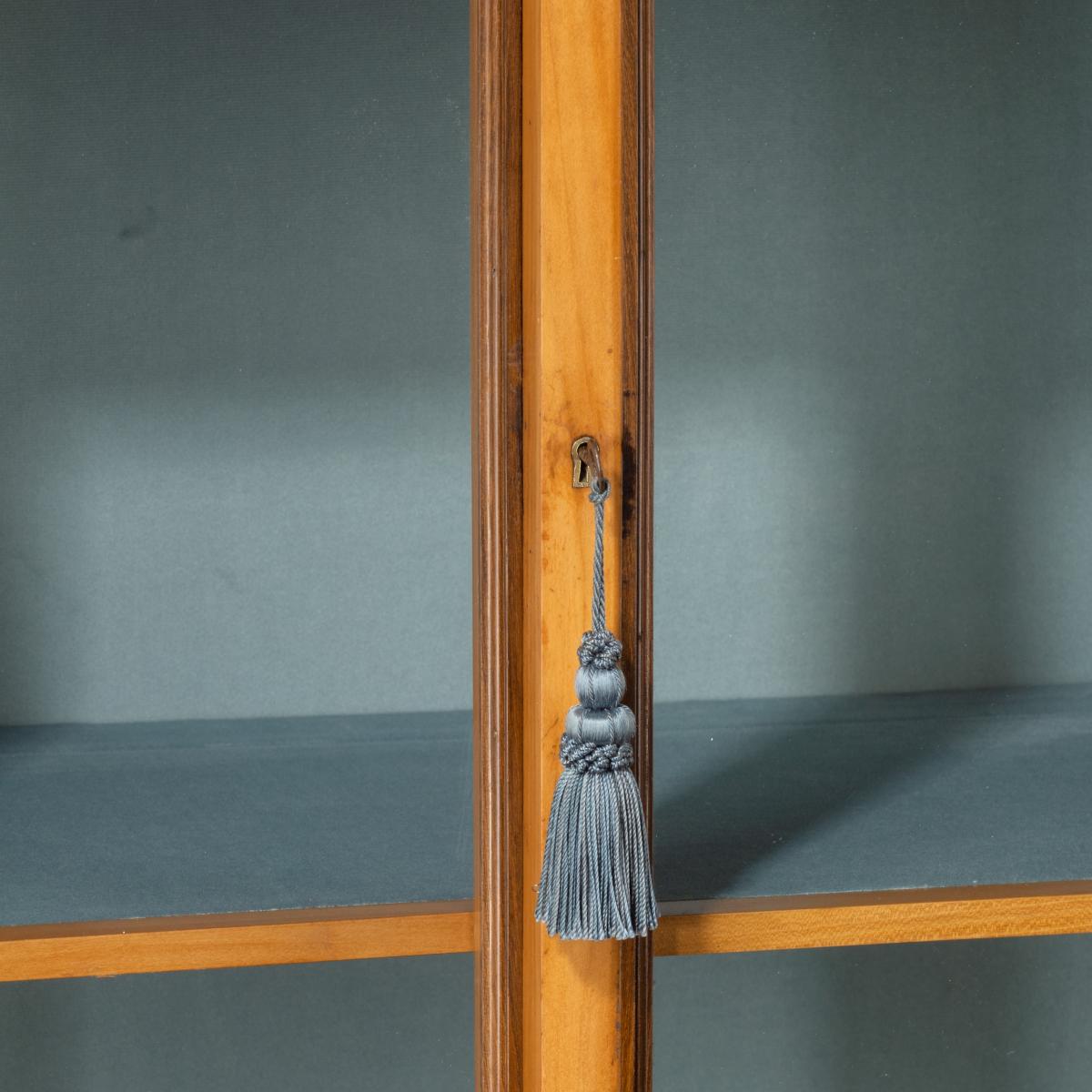
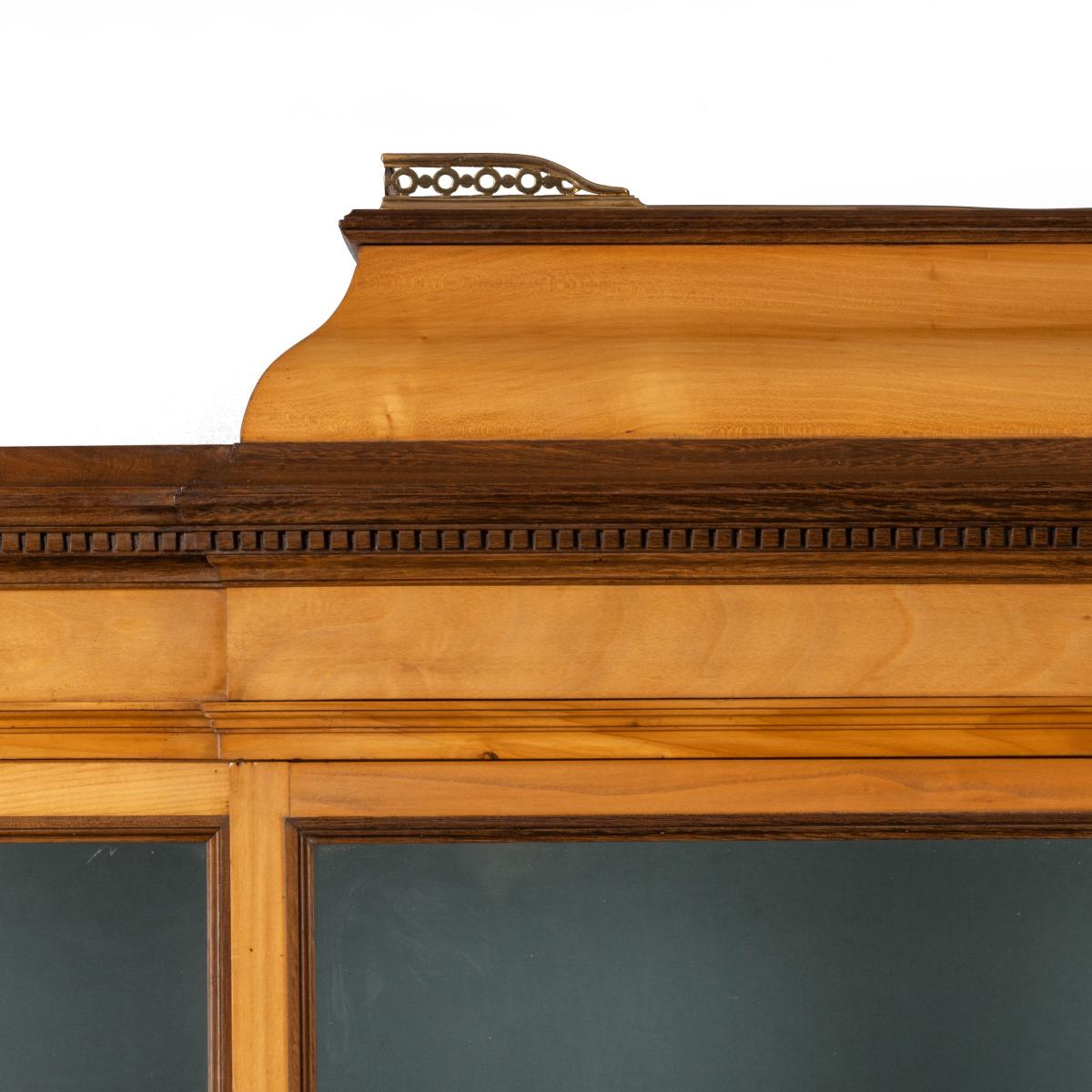
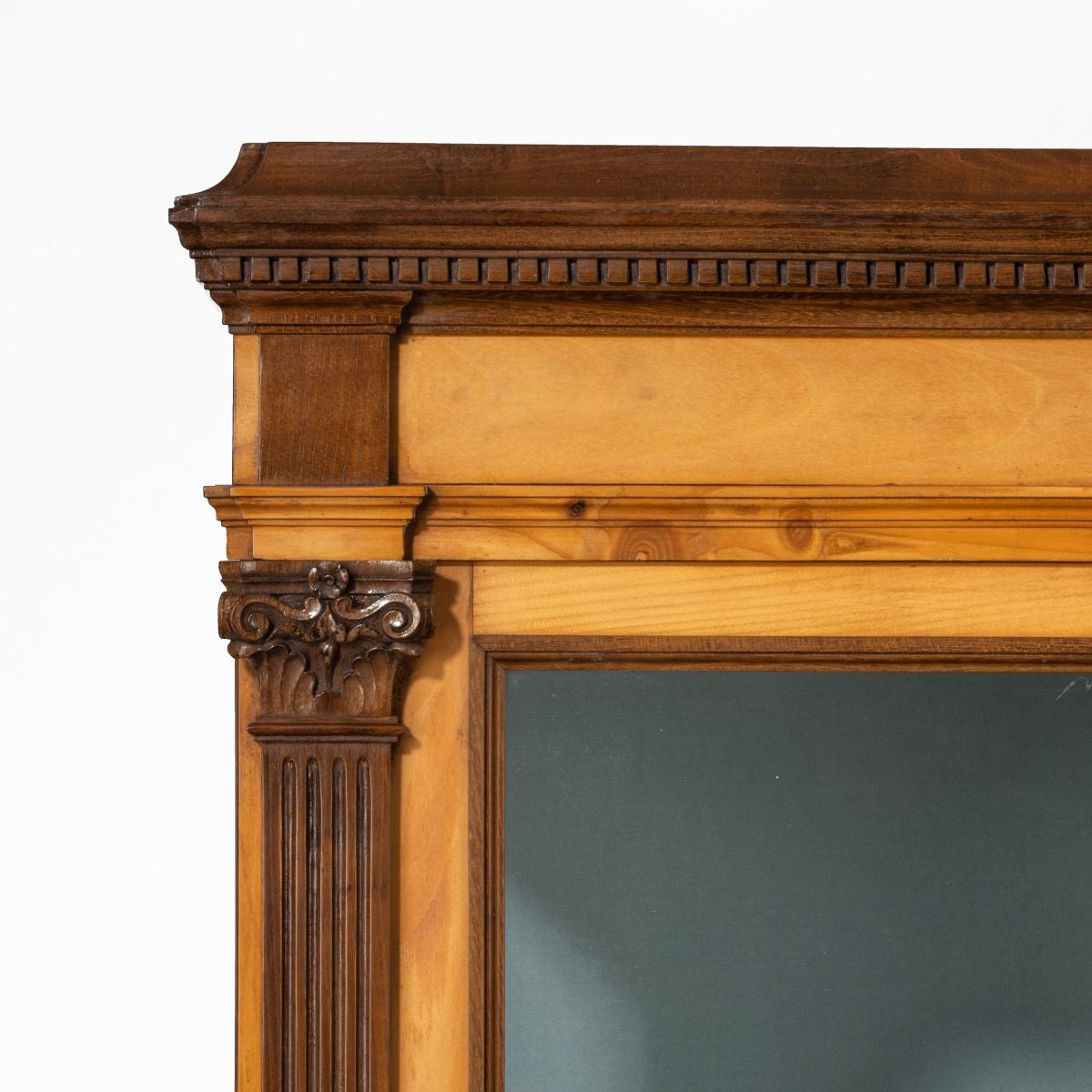
This object is eligible for a Certificate of BADA Provenance
The BADA Standard
- Since 1918, BADA has been the leading association for the antiques and fine art trade
- Members are elected for their knowledge, integrity and quality of stock
- Our clients are protected by BADA’s code of conduct
- Our dealers’ membership is reviewed and renewed annually
- Bada.org is a non-profit site: clients deal directly with members and they pay no hidden fees
A fine late Victorian Douglas fir, cherry and laburnum display cabinet from Cowden Castle, of glazed breakfront form in two sections, the upper section with a single door and with two shelves with double-re-entrant corners surmounted by a plinth with a brass gallery, the similar lower section with a single shelf, flanked by stop-fluted pilasters, number ‘6’ on the frieze, with a brass plaque stating ‘ Made from Douglas fir blown down in 1887, Laburnum in 1889 and tennis ground Guigne [sweet cherry] tree struck by lightning in 1889 all grown at Cowden’.
Provenance: Cowden Castle, Clackmannanshire.
Footnote: Cowden Castle, originally known as Castleton, was built around the remains of a much earlier house dating to around 1320. It was acquired by John Christie (1824-1902), a wealthy Lanarkshire coal-owner, in 1865 and its principal attraction was the quality of the soil in the gardens as Mr Christie was a keen arborist. This interest in trees explains the use of the estate timber in the construction of this cabinet which would have been produced for Mr Christie around 1890 judging by the dates of the storms mentioned on the plaque attached to the piece-1887 and 1889.
Interestingly the artistic taste of the Christies is demonstrated by the fact that they employed the architects John Honeyman and Keppie to make alterations to the property between 1893 and 1894. This firm later became Honeyman, Keppie and Mackintosh and a young Charles Rennie Mackintosh was actively involved in the firm’s commissions during the 1890s though there is no direct evidence that he ever worked at Cowden. Nonetheless, the use of such an avant garde firm of architects shows that the Christie family was part of a small group of patrons of impressive taste and financial means – something that is also demonstrated very clearly by the form and quality of this cabinet.
After John Christie’s death in 1904 his daughter Isabella (known as Ella) inherited the castle. She was an extremely interesting figure and was a very keen traveller who was fluent in four languages and travelled throughout Europe and Asia. A visit to Japan proved particularly formative and she employed a highly respected Japanese garden designer, Taki Handa, a graduate of the Imperial School of Garden Design in Nagoya, to create a Japanese landscape garden at Cowden. This garden has been described as the “best garden in the Western world” by Japanese horticulturalists and was visited by Queen Mary in 1932. Following the death of Isabella, Dowell’s of Edinburgh sold the contents of the castle at a three day auction in May 1950. A single copy of the catalogue for this sale survives in the Getty Research Institute in California and this display cabinet was listed as lot 381 on page 14. The estate passed to the Stewart branch of the Christie family and the house was demolished in 1952.
Dimensions
Height 75 ¼ inches Width 47 ½ inchesThe BADA Standard
- Since 1918, BADA has been the leading association for the antiques and fine art trade
- Members are elected for their knowledge, integrity and quality of stock
- Our clients are protected by BADA’s code of conduct
- Our dealers’ membership is reviewed and renewed annually
- Bada.org is a non-profit site: clients deal directly with members and they pay no hidden fees


